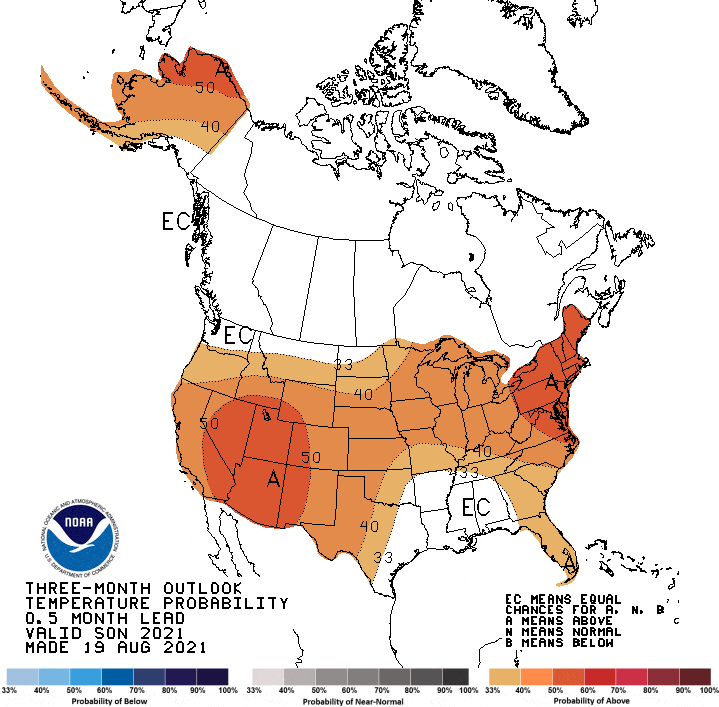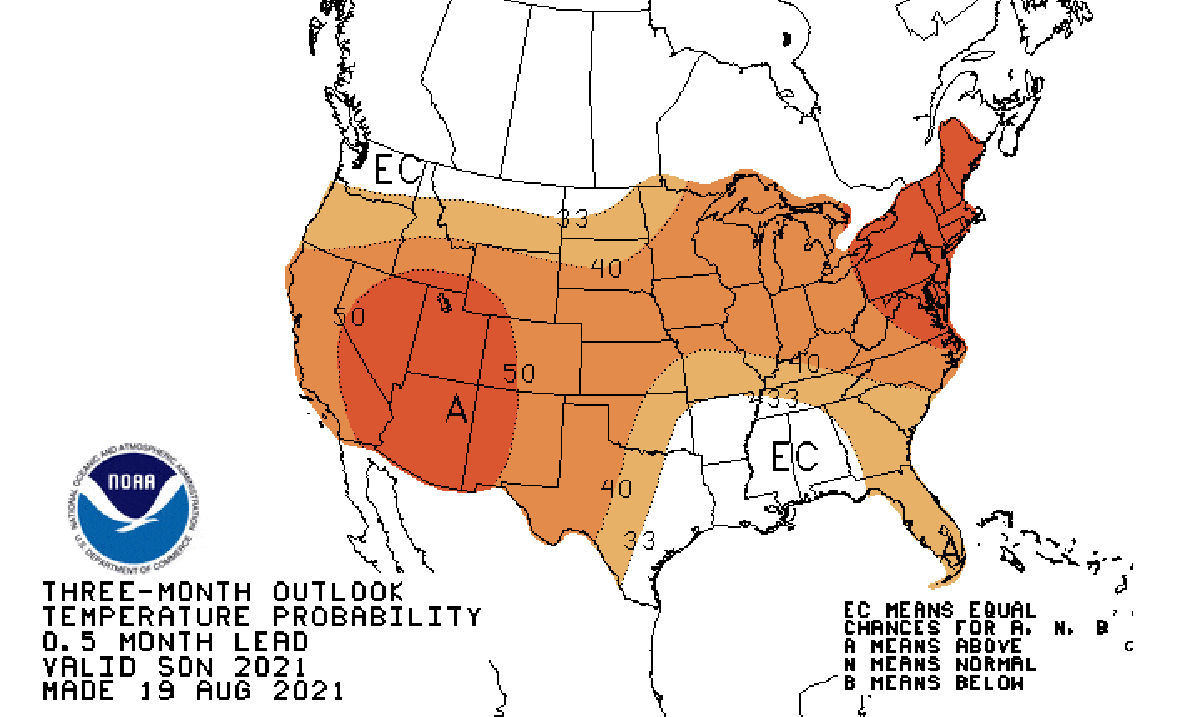As we close out the summer and get closer and closer to fall, many of us are looking forward to the cool, crisp air, and leaves falling to the ground. However, a new report by the Climate Prediction Center (CPC) shows we may not get what we are expecting this fall.
In an extended three-month outlook that shows the upcoming climate trends approaching for September through November, the CPC predicts higher than average temperatures. They believe that we could have an increased chance for La Nina this fall.

The chances of La Nina are now 60%.
SciJinks.gov defines La Nina as a “weather pattern that occurs in the Pacific Ocean. In this pattern, strong winds blow warm water at the ocean’s surface from South America to Indonesia. As the warm water moves west, cold water from the deep rises to the surface near the coast of South America.”
“La Nina weather patterns can cause drier than average years in some regions of the United States.”
And this small change in the ocean’s temperature can cause a ripple effect worldwide.
In places like Indonesia and Australia, during a stint of La Nina weather, there is more rain than usual. And places like the Southwestern United States will likely see less rain and more dry conditions than usual.
Unfortunately, in the Gulf of Mexico and along the Gulf Coast, there will likely be a higher chance for tropical cyclones, including hurricanes.
This could also be bad news for the Southwest, where droughts often lead to wildfires.
However, the Pacific Northwest will see more rain than usual, which should be a welcome change from the droughts and fires that happened during the summer.
CNN reports that the impact of La Nina could also cause the fall foliage to look different than it typically would due to a lack of rain in the west. In turn, it’s likely most of them will start to transform rather quickly, as they will go into ‘survival mode,’ which causes the leaves to fall off in preparation for winter.
So while there will be a brief pop of fall color- it will end quickly, as the leaves fall off and transform into their winter appearance.
We will also be less likely to see the cool mornings, breezy days, and the overall feeling of fall as early as it usually appears. The temperatures will be higher than usual during the next three months, but that doesn’t mean that we won’t see fall weather. We will still see cooler temperatures than summertime, but we won’t see the same fall temperatures we are used to seeing.

